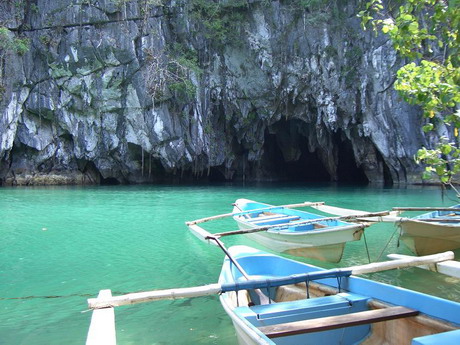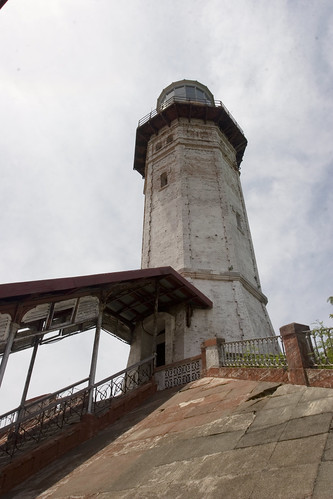
5 Fundamentals for Success in Life
By Mark Harrison
What can we do to become more successful? How can we excel in all areas of life, whether professional or personal? A vast body of literature has been written on this subject over the decades, but here are five points which I regard as being fundamental.
How to Be Succeessful in Life
1. Be Proactive
Viktor Frankl said that between stimulus and response there is a gap, and within this gap lies all our freedom. Even as he was suffering immense privations in a Nazi concentration camp, he realized that he was responsible for his thoughts and actions and was not simply a bundle of conditioned responses.
Like Frankl, we should strive to be the creators of our own destiny, orchestrating our experience of life. Everything starts in the mind and ripples out, so what happens around us is a reflection of our own inner world. Whether we allow our inner world to grow wild, whether we let weeds spring up and take hold or whether we cultivate a green and pleasant garden – it is all our choice: this is what it means to be proactive.
2. Take Responsibility
Since we have the power to choose our experience, we also need to accept responsibility for this. Perhaps not that everything that comes our way is a direct result of our own thinking (though some might say it is) but what we attract into our life is, largely, a reflection of our thinking. Much of this occurs on a subconscious level, but the subconscious takes its lead from the thinking mind, so changing our thoughts will change our world, and we are responsible for this.
Our behavior is a natural outcome of our mental images, and so we are responsible for our behavior too, and also for the behavior we tolerate in others. If we allow others to ride roughshod over us, then we have ourselves to blame.
3. Be a Good Leader
We cannot be effective in any area of life unless we have good leadership skills. Leadership is an art and each of us needs to find our own approach to it. Primarily, we need to understand how to lead ourselves, and this means having a compass, a direction which guides all our actions. This compass often takes the form of a personal mission statement, a document spelling out the values we live by.
As we lead others, whether as parents, bosses, in families or organizations of which we are a part, we need first and foremost to lead by example, making it clear what our values are and that we live by them. Any inconsistency in our professed values and our behavior will be spotted, seen through and will ruin our effectiveness. Personal complicity and double standards are the nails in the coffin of our ability to lead.
A good leader will lead quietly and subtly, from the rear, without fuss, without fanfare. In the words of the Tao Te Ching,
‘A good soldier does not inspire fear;
A good fighter does not display aggression;
A good conqueror does not engage in battle;
A good leader does not exercise authority.
This is the value of unimportance;
This is how to win the cooperation of others;
This to how to build the same harmony that is in nature.’
4. Don’t Let Fear Stop You
I love the movies of M Night Shyamalan. My favorite is The Village. The film is about facing the fears that haunt us and realizing that, when we do so, they disappear – nothing is as it seems. I heard once (though I can’t remember where) that the most commonly given command in the Bible is ‘do not be afraid.’
Whenever we grow, there is fear. Whenever we do something new, there is fear. Whenever we push ourselves to new heights or expand our comfort zone, there is fear. This is the nature of life. Life is always moving – either we are moving forward, growing, or we are moving back, dying. We have a choice – we can either grow or we can die. Growth and fear go hand in hand. It’s part of a package, and if we fail to embrace the whole package, we will die.
Don’t fear failure – failure is inevitable and necessary. Look at the life of any successful person and you will see a litany of failure. This failure is the foundation of success, so long as we learn from it.
Don’t fear other people. They are as vulnerable and as beautiful as you are – only sometimes they lash out in various ways to protect themselves. Everyone is doing their best, so be gentle on other people and don’t be scared of them.
When you face your fears, they will vanish like smoke.
5. Never Stop Learning
I have come to the conclusion that learning is the fundamental activity in a successful and purposeful life. If we fail to learn, we fail to grow, and this means that we die. Life gives us endless opportunities to learn, and the more difficult the situation, the more we are likely to learn.
We can learn from other people, especially difficult ones – they are like angels sent from heaven to teach us about ourselves. We can learn from the things happening around us. And most of all, we can learn by watching ourselves, seeing how we react and reflecting deeply on what moves us.
These five activities, if they can become habits, will lead to success in all areas of life. They are not a quick fix, but are the foundation of a life lived well.
http://www.thechangeblog.com/success-in-life/
If you believed you could do anything, you can conquer your fear. If you look into your future, what you do see? Do you imagine yourself enjoying great success, or disastrous failure? Can you even imagine yourself trying? What we imagine matters, because believing is always the first step to success. Without it, there will always be some failure that seems insurmountable.[1]
http://www.greatlivingnow.com/2012/05/17/how-to-succeed-in-life/
The best tip....Never give up!

By Mark Harrison
What can we do to become more successful? How can we excel in all areas of life, whether professional or personal? A vast body of literature has been written on this subject over the decades, but here are five points which I regard as being fundamental.
How to Be Succeessful in Life
1. Be Proactive
Viktor Frankl said that between stimulus and response there is a gap, and within this gap lies all our freedom. Even as he was suffering immense privations in a Nazi concentration camp, he realized that he was responsible for his thoughts and actions and was not simply a bundle of conditioned responses.
Like Frankl, we should strive to be the creators of our own destiny, orchestrating our experience of life. Everything starts in the mind and ripples out, so what happens around us is a reflection of our own inner world. Whether we allow our inner world to grow wild, whether we let weeds spring up and take hold or whether we cultivate a green and pleasant garden – it is all our choice: this is what it means to be proactive.
2. Take Responsibility
Since we have the power to choose our experience, we also need to accept responsibility for this. Perhaps not that everything that comes our way is a direct result of our own thinking (though some might say it is) but what we attract into our life is, largely, a reflection of our thinking. Much of this occurs on a subconscious level, but the subconscious takes its lead from the thinking mind, so changing our thoughts will change our world, and we are responsible for this.
Our behavior is a natural outcome of our mental images, and so we are responsible for our behavior too, and also for the behavior we tolerate in others. If we allow others to ride roughshod over us, then we have ourselves to blame.
3. Be a Good Leader
We cannot be effective in any area of life unless we have good leadership skills. Leadership is an art and each of us needs to find our own approach to it. Primarily, we need to understand how to lead ourselves, and this means having a compass, a direction which guides all our actions. This compass often takes the form of a personal mission statement, a document spelling out the values we live by.
As we lead others, whether as parents, bosses, in families or organizations of which we are a part, we need first and foremost to lead by example, making it clear what our values are and that we live by them. Any inconsistency in our professed values and our behavior will be spotted, seen through and will ruin our effectiveness. Personal complicity and double standards are the nails in the coffin of our ability to lead.
A good leader will lead quietly and subtly, from the rear, without fuss, without fanfare. In the words of the Tao Te Ching,
‘A good soldier does not inspire fear;
A good fighter does not display aggression;
A good conqueror does not engage in battle;
A good leader does not exercise authority.
This is the value of unimportance;
This is how to win the cooperation of others;
This to how to build the same harmony that is in nature.’
4. Don’t Let Fear Stop You
I love the movies of M Night Shyamalan. My favorite is The Village. The film is about facing the fears that haunt us and realizing that, when we do so, they disappear – nothing is as it seems. I heard once (though I can’t remember where) that the most commonly given command in the Bible is ‘do not be afraid.’
Whenever we grow, there is fear. Whenever we do something new, there is fear. Whenever we push ourselves to new heights or expand our comfort zone, there is fear. This is the nature of life. Life is always moving – either we are moving forward, growing, or we are moving back, dying. We have a choice – we can either grow or we can die. Growth and fear go hand in hand. It’s part of a package, and if we fail to embrace the whole package, we will die.
Don’t fear failure – failure is inevitable and necessary. Look at the life of any successful person and you will see a litany of failure. This failure is the foundation of success, so long as we learn from it.
Don’t fear other people. They are as vulnerable and as beautiful as you are – only sometimes they lash out in various ways to protect themselves. Everyone is doing their best, so be gentle on other people and don’t be scared of them.
When you face your fears, they will vanish like smoke.
5. Never Stop Learning
I have come to the conclusion that learning is the fundamental activity in a successful and purposeful life. If we fail to learn, we fail to grow, and this means that we die. Life gives us endless opportunities to learn, and the more difficult the situation, the more we are likely to learn.
We can learn from other people, especially difficult ones – they are like angels sent from heaven to teach us about ourselves. We can learn from the things happening around us. And most of all, we can learn by watching ourselves, seeing how we react and reflecting deeply on what moves us.
These five activities, if they can become habits, will lead to success in all areas of life. They are not a quick fix, but are the foundation of a life lived well.
http://www.thechangeblog.com/success-in-life/
If you believed you could do anything, you can conquer your fear. If you look into your future, what you do see? Do you imagine yourself enjoying great success, or disastrous failure? Can you even imagine yourself trying? What we imagine matters, because believing is always the first step to success. Without it, there will always be some failure that seems insurmountable.[1]
http://www.greatlivingnow.com/2012/05/17/how-to-succeed-in-life/
The best tip....Never give up!
































